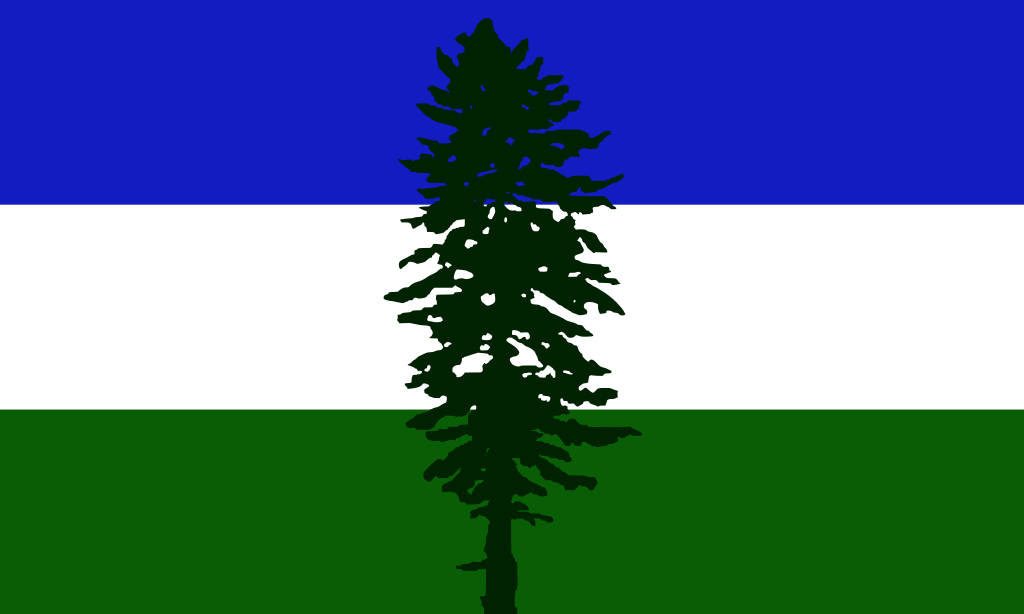Seeing as there’s so few restaurants within reach, anyone here know Native American or First Nations food?
What’s a good recipe to make at home from accessible ingredients that will male you want to have it again?
You might give fry bread a try. There are a lot of recipes available, and it can be topped with either sweet or savory ingedients. I suggest a recipie that uses shortening for frying, but thats what my grandma used to use so I am biased. Cheers!
Love frybread. Got turned onto it by of all things Reservation Dogs, one of the funniest and most insightful series I’ve seen.
Most native food is composed primarily of buffalo meat, fish, corn, tomatoes, potatoes, and berries. Basically just whatever they happened to be able to find and/or farm. Buffalo chili is phenomenal, (buffalo is red meat that is much leaner than beef, so it tastes a lot like beef chili without all of the grease) but maybe not something that you’d want to try as your first undertaking.
Fry bread is quick and easy, but a little bit messy if you’re not accustomed to frying things. Fry bread was often used by many tribes as a sort of base for many of their dishes, sort of like tortillas in Mexican cuisine. It’s dense and fluffy at the same time, because the dough bubbles unevenly as it fries.
And speaking of Mexican cuisine, there is a lot of overlap between native dishes and traditional Mexican dishes, because many native tribes (especially the ones in the southern US) were proto-Aztecan cultures. Remember how I mentioned tomatoes? Mexican salsa has roots in native cuisine. Hell, my own tribe’s language has the same roots as Aztec, the same way english and German are both derived from the same root language.
Out on the Pacific coast, it’s salmon, shellfish, berries, and camas root.
You left out squash, many of varieties of were a staple vegetable across North America (and possibly South as well? I’m less familiar.) Also, peppers. Extremely important.
Fair enough. Aside from pumpkin, I don’t really like most squash… Which is probably why it didn’t come to mind when I was writing the comment. And you’re also spot on about the peppers; Many of today’s most popular peppers originated in the americas. I alluded to that with the bit about salsa, but didn’t outright say it.
Because you arent looking?
We have a few here in my city… Maybe you just gotta actually go look around a bit more…?
It’s not the same everywhere. Chicago has one of the biggest restaurant scenes in the country and there aren’t any Native American restaurants. There are a few Mexican restaurants that do one or two traditional dishes, but that’s it.
That’s surprising, there was one in the 50k pop town I grew up in.
You probably have more native folks than some regions. Columbus Ohio is a significant enough culinary city, but not only are there no reservations here in ohio, of the five states we border only Michigan has any. Illinois also doesn’t have any. Here’s a map and you can see the reason for the disparities clearly on it. Any Native American cuisine in this region would be a personal project of someone’s.
Spent my first 30 years in Oklahoma. Never heard of or seen one.
To be more accurate, smallpox killed somewhere between like 65-95% of the native american population after contact with Europeans. And, of course, many of their remaining descendants ended up concentrated into reservations.
So, I imagine if you were going to find native american cuisine restaurants, they’d be rare but typically in and around reservations.
Guns, Germs, and Steel covers that in a brief but eye-opening way. When Hernando de Soto’s crew first explored the Mississippi river in 1541 they wrote about all the people they found, but did not mention bison. A century later another set of Spanish explorers revisited the Mississippi and didn’t record much at all about people, but commented on how prolific the bison were.
Worth noting GGS is incredibly poorly received in the anthropology community. If this was reddit most of the major history and anthro subs have a bot to debunk much of it.
Jarred Diamond, the author of GGS, is an eye doctor and bird expert. He isn’t a good source for this stuff.
deleted by creator
CGP Grey is such an odd person. Charming, good presentation, sometimes has weird takes.
His video on how to solve traffic uses “mass automatic cars talking to each other” which ignores hundreds of thousands city planners and other actual experts advice: public transit.
deleted by creator
Worth noting that “solution” was strongly promoted when I sold cars. If you do have some from of assistive cruise control you should use it.
Didn’t know that. Thanks for the info.
If you want to look into it the askhistorians FAQ is great
The initial Spanish expeditions had herds of pigs with them, which transmitted a ton of diseases to the natives. A hundred years later when other Europeans came the cities were almost completely depopulated.
People are weirdly against this idea, I think because they believe it diminishes the deliberate genocide that came later, which it doesn’t. The horrible truth is that disease spread through completely biologically defenseless populations starting in the late 15th century. By the time European countries were consolidating colonial power, the Native population had been obliterated by somewhere between 65–89%. Those aren’t extremes, that’s a range of completely plausible figures. The variance is so large because it’s hard to tell how many people used to live in a place when disease, unaided, killed every person in every settlement in unthinkably huge areas. To say entire tribes disappeared is an understatement, entire networks of multiple cultures were wiped out so thoroughly that their memory is lost forever. The Native American population in 1800 was a small fraction of the number of people who once lived.
Didn’t Lewis and Clarke note how often they found abandoned settlements?
Not sure about Lewis and Clark, but I have read that David Thompson did.
George Vancouver recorded beaches strewn with old human bones. Around the same time he wrote journal entries along the lines of, “Wow, look at all this rich, uninhabited land that would be ideal for settlements!” I don’t recall Ol’ George ever putting two and two together.
Never knew that, wow.
Their diminished population just made it a whole lot easier for Europeans to commit further atrocities
Even in the american mythos of the mayflower it mentions them surviving off established food caches and stores from abandoned settlements. People dont think much about that, but they werent left behind because the natives were so welcoming to the Pilgrims.
Many reservations are far from the original habitat of the people living in them, (see Trail of Tears) so the food materials for their original cuisine can’t be found or grown
Four Corners area. Navajo fry bread, I still dream about it. Also the Smithsonian has a Native American museum with a great cafeteria, all things considered. It was under renovation last time I went. I hope it still good, if not better.
tocabe in Denver has absolutely killer fry bread
“Most of them” is the understatement of the day. Our country killed nearly all of them.
I’m from Oklahoma and rarely saw a Native American. Saw an old guy in Chicago one time and we about shit.
I’ve been living in Oklahoma for over 20 years now, and I’ve still never seen a Native American.
It is truly staggering the extent of the destruction we caused on the natives to this land.
Wiki says 96% of them were killed. That’s something like 3.6 million humans were slaughtered.
And most all of their land taken.
It’s an injustice in this country that we don’t learn about it more and try to atone as best we can.
There’s a good reason that Hitler’s concentration camps and Final Solution were inspired by America’s campaign against the native nations.
We pioneered race science too
It’s worth remembering that most of them were killed by disease, and that the diseases travelled faster than the colonists. Europe had had centuries of people living in filthy cities where all kinds of diseases were constantly breeding. The survivors carried those diseases but were immune to them. As soon as they met the native populations, the natives were exposed to countless deadly diseases that were completely new to them.
Now, sure, the colonists went and tried to slaughter as many natives as they could, but often they’d get to a new native settlement and find it was mostly empty because everybody had already either died or fled. Who knows, the natives might have been able to put up a fight against the colonists if they hadn’t been so devastated by the diseases. I’d bet that the colonists just took all the natives dying as another sign that their conquest was blessed by their god.
The city of Cohokia was unrivaled in population on the continent until post-colonial Philadelphia about 800 years later, and by some estimates may have even rivaled contemporary London at its peak
There’s other native American cities being found hidden in the jungles of South America too.
The amount of history, stories and people that have been lost to the sands of time are incredible
Keep in mind that at the time London wasn’t all that big a city.
Cahokia is estimated at between 12k and 40k people. That’s a decent sized city for sure, but around the same time, Baghdad had a population over 1 million. Uruk in modern-day Iraq had 40k people at 3000 BC, and Ur hit 100k by 2000 BC. Rome and Alexandria hit 1 million 2000 years ago.
I think Tenochtitlan was more impressive, not only because of the population (estimated at between 200k and 400k on the day Cortez arrived) but also because of how the city looked, basically a city built into the middle of a lake. I still love to look at Thomas Kole’s visualizations of the city
By the way, if you haven’t read Cahokia Jazz, you should. It’s a fun crime story, set in a world where Cahokia didn’t fall, and where the independent native people are waging political battles to keep their freedom as Europeans claim the rest of the continent.
Of that 96% starvation and disease killed many/most. The USA absolutely waged genocidal campaigns against the various tribes but that 3.6 million includes other deaths as well.
Active or not, the Europeans and then the Americans caused the collapse of their civilization.
Imo all deaths are related.
Many weren’t intentional though. There was diseases spread initially by livestock that killed many of that 3.6 million.
Yes, there absolutely were intentional campaigns of genocide but a lot of natives just caught the flu and had zero defense to it. Nobody intentionally gave them the flu because many of these people never saw Europeans.
I guess my sticking point is, does it matter if it was intentional? Contact with Europe destroyed them from both accidents and outright malice. It was still genocide even if it was on accident, imo.
I have a suspicion that if it weren’t for all the disease the colonizers would have destroyed them anyway.
Also nobody intentionally made them deathly ill? Smallpox blankets.
Measles, syphillis, rubella, mumps, chickenpox even. chickenpox is especially dangerous to adults who never had it.
You’re not wrong.
However, it is worth pointing out that the documented “smallpox blankets” stuff happened in the 1700s and 1800s, which was already a century or two after the continent had been greatly depopulated by diseases spread unintentionally.
“Guns, Germs, & Steel”?
Yes GGS= Guns Germs and Steel by Jared Diamond. OP already used the full name.
And who do we think caused them to die of starvation and sickness without access to the lands they could hunt or doctors.
And then there’s the whole gifting then smallpox blankets thing
shooting bison and smallpox blankets say hello
I mentioned starvation specifically because of the needless slaughter of bison.
We count that in the genocide
my point is it is completely fair to say white America killed the vast majority of the natives
whitewashingly pedantic to blame the gun and not the man pulling the trigger
That’s true, but it’s also important to not overstate it. Anti indigenous groups love to claim that since we basically wiped them out it’s a fool’s errand to give the survivors their reasonable demands like traditional lands and respecting tribal sovereignty.
Natv in Broken Arrow is pretty good.
Then kidnapped the remaining children and put them in “schools” where they only thing even attempted was to erase indigenous culture…
I’ve seen plenty of food trucks but it was in the South West. So your mileage may vary.
There are a number of Dinè(Navajo) food carts and trucks, but mostly people selling food out of their trunks in parking lots, or on Facebook market place here in NM. And Mexican/New Mexican/TexMex/CA Mex are all different versions of Native American foods. Tamales are a native food.
Mmm Tamales.
But yeah I’m not restricting my definition of restaurant to a building. That cuts off entire categories of awesome food.
Sorry, was not trying to imply you were limiting to a restaurant. More I was trying to further illustrate your point.
Man we need better tone marks for text language. I wasn’t mad at you, just making conversation.
As for tamales, they are one of my favorites. But since becoming a vegetarian they are much harder to find ones I can eat. Sometimes Costco has green chile Monterey Jack tamales. Which are okay, but nothing like the ones from the trunk of a barely running car outside the dollar store.
I wonder how red chile jack fruit tamales would be.
Lmao that’s the truth, I’m pretty sure those trunks add taste.
I left nm shortly after high school and eventually ended up living in Maryland. The majority of our Mexican places in Maryland were Salvadoran, which was fine but not New Mexican food and tamales were scarce. I made them once and solo they were so labor intensive. I floated the idea to the social club where we hung out and got a decent sized group to help make them. We ended up making tamales about once a quarter. They were some of the best I have ever had.
Seattle has one and it’s delicious. We also have/had another food truck. There are pow wows in the area that serve the best salmon. They exist.
The Pacific Northwest is the rare exception where some of the remaining tribes are still on or adjacent to their ancestral homes.
Best seviche I ever had was made out of geoduck and from a tailgate after doing a beach cleanup.

The snails I’ve had (only twice) were delicious. Is geoduck like that? They look like a big snail.
I farmed them for a number of years and they are surprisingly versatile. For the most part they taste like your standard manila, its just got a lot of mass compared to most shellfish. Preparation is everything and overcooking gets you a rubbery mass which isn’t so great.
I enjoyed slicing the siphon and deep frying them, but at that point it was less flavor than texture what with the beer batter and all, etc.
Is that similar to geodude
Massachusetts has a little bit of that as well, though in my experience, it only really means that the tribe members have more relaxed rules around regulated hunting/fishing seasons. Being able to fish out of season and harvest in closed shellfish beds, that sort of thing.
Off the Rez for the win. I hear Spokane has a good place, too.
I wish I had a chance to try ʔálʔal Cafe before it closed last year.
Off the Rez was exactly it. I wish I lived closer to it so I could go there more.
There’s a joint in a little New Mexico Town that has amazing frybread. I wish I could remember where. It was somewhere I stopped on a whim on the way through.
We’ve got one in Minneapolis too that’s good. They do exist support em.
Was going to bring up pow wows. Great way to find Native foods, learn about culture and history, and for many, most of the proceeds go back into the tribes hosting the event.
It’s only like $10-$15 to get in too. A couple of hours worth of fun. The salmon is more, but worth it.
I’ve had the food truck at the Ballard breweries! The fry bread is amazing.
Don’t you worry Patrick, our zealous lefties are on that shit. Why, just recently, they spent a long time discussing why they’d prefer a fascist regime than to vote for someone they considered guilty of genocide.
Admittely it hasn’t worked out very well yet, but the point is that they are keenly aware of the issues with the Native American genocide. I’m almost sure.
You got any of that fry bread.
There’s Owamni in Minnesota. The food uses pre-colonial ingredients. So no dairy, eggs, wheat, etc. They also source the ingredients from indigenous farms
No eggs? Are you telling me no one ate one if the more nutrient dense foods or are you saying it just doesn’t make it into cuisine because eggs wouldn’t be common to people who didn’t farm birds?
The latter.
Owamni has fantastic food; the James Beard award was well deserved.
Chickens are an old-world animal, domesticated from the red junglefowl of Southeast Asia. IIRC there’s some possible evidence for chickens being taken to South America by the Polynesians, but they certainly didn’t become widespread in the Americas until the European colonizers showed up.
Maybe Native Americans ate the eggs of other birds that they did have access to, such as turkeys? But even if they did, it’s chicken eggs that are the ones easily commercially available in the quantities a restaurant would need, so…
Ah yeah I should have said poultry/ chicken eggs. I looked on the menu and there are some duck eggs
What I think is fascinating is that there is conclusive evidence that Polynesians and Indigenous South Americans interbred.
But only once.
But only once.
I know, right? There are also a few bits of evidence for Polynesian contact in various places all up and down the coast, from Chile (Arucanian chickens) to California (Chumash canoes). But only a few.
Reaching the continent, I get.
Failing to reach the continent, I get.
But reaching the continent, making barely any (but not zero!) impact, and then noping out again? That’s just weird!
All of Latin America: Y’alls cuisines aren’t heavily influenced by native peoples’s? Damn bro that sucks
Now I can’t stop thinking about the Peruvian restaurant down the street
Tocabe in Denver is excellent too. It has some pretty unique flavor combinations going on.
Thank you for the suggestion.
i am glad i scrolled down i was typing the same response.
lol, holy shit search that guy. He looks like he still wears short pants. Some rich douche with a real punchable face. … fucking Polo logo on a baseball cap.














